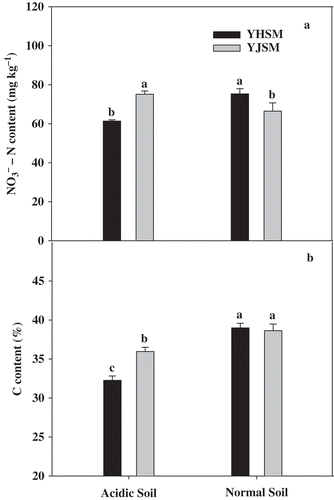Figures & data
Figure 1 Grain yield and height of the two rice cultivars under different growing soil conditions. Acidic soil and normal soil indicate that the samples that were collected from rice grown in acidic soil and normal soil, respectively. The bars indicate the standard error of the mean. The mean values for each treatment with different lowercase letters indicate significant differences by the LSD-test (p < 0.05 n = 4).
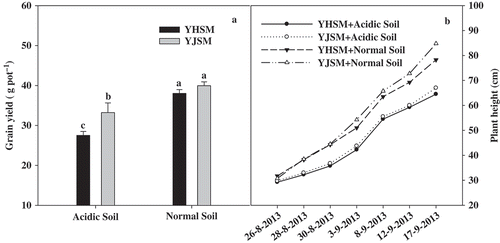
Figure 2 The MDA content in the roots of two rice cultivars under different growing soil conditions. The acidic soil and normal soil indicate that the samples were collected from rice grown in acidic soil and normal soil, respectively. The bars indicate the standard error of the mean. The mean values for each treatment with different lowercase letters indicate significant differences by the LSD-test (p < 0.05 n = 4).
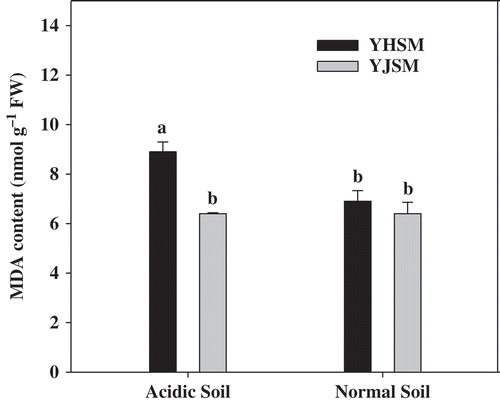
Figure 3 SOD, POD and CAT activities in the roots of the two rice cultivars under different growing soil condition. Acidic soil and normal soil indicate that the samples were collected from rice grown in acidic soil and normal soil, respectively. The bars indicate the standard error of the mean. Mean values for each treatment with different lowercase letters indicate significant differences by the LSD-test (p < 0.05 n = 4)
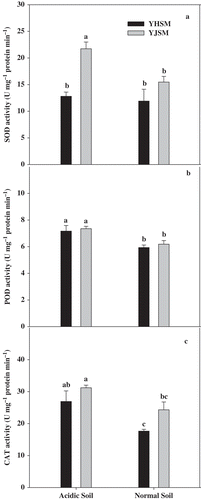
Figure 4 ASA and GSH contents in the roots of the two rice cultivars under different growing soil conditions. Acidic soil and normal soil indicate that the samples were collected from rice grown in acidic soil and normal soil, respectively. The bars indicate the standard error of the mean. Mean values for each treatment with different lowercase letters indicate significant differences by the LSD-test (p < 0.05 n = 4).
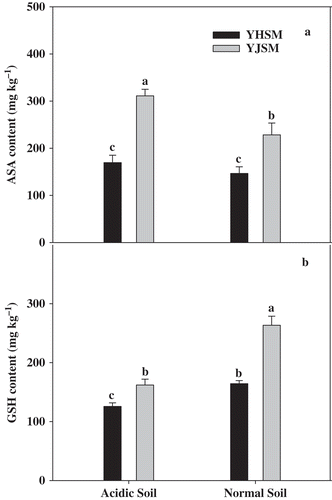
Figure 5 NR activities in the leaves of two rice cultivars under different growing soil conditions. Acidic soil and normal soil indicate that the samples were collected from rice grown in acidic soil and normal soil, respectively. The bars indicate the standard error of the mean. The mean values for each treatment with different lowercase letters indicate significant differences by the LSD-test (p < 0.05 n = 4).
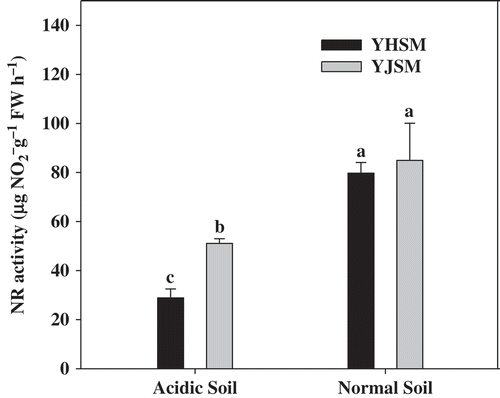
Figure 6 GS, GOGAT and GDH activities in the leaves of the two rice cultivars under different growing soil conditions. Acidic soil and normal soil indicate that the samples were collected from rice grown in acidic soil and normal soil, respectively. The bars indicate the standard error of the mean. Mean values for each treatment with different lowercase letters indicate significant differences by the LSD-test (p < 0.05 n = 4).
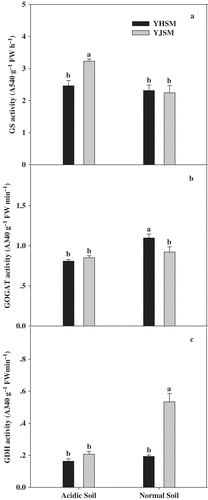
Figure 7 Soluble protein, soluble sugar and free amino acid contents in the leaves of the two rice cultivars under different growing soil conditions. Acidic soil and normal soil indicate that the samples were collected from rice grown in acidic soil and normal soil, respectively. The bars indicate the standard error of the mean. Mean values for each treatment with different lowercase letters indicate significant differences by the LSD-test (p < 0.05 n = 4).
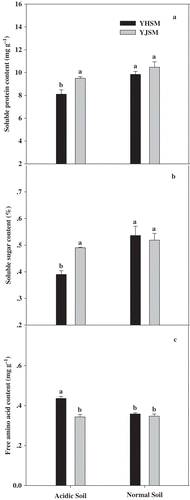
Figure 8 TheNO3–N and carbon (C) contents in the leaves of the two rice cultivars under different growing soil conditions. Acidic soil and normal soil indicate that the samples were collected from rice grown in acidic soil and normal soil, respectively. The bars indicate the standard error of the mean. Mean values for each treatment with different lowercase letters indicate significant differences by the LSD-test (p < 0.05 n = 4).
